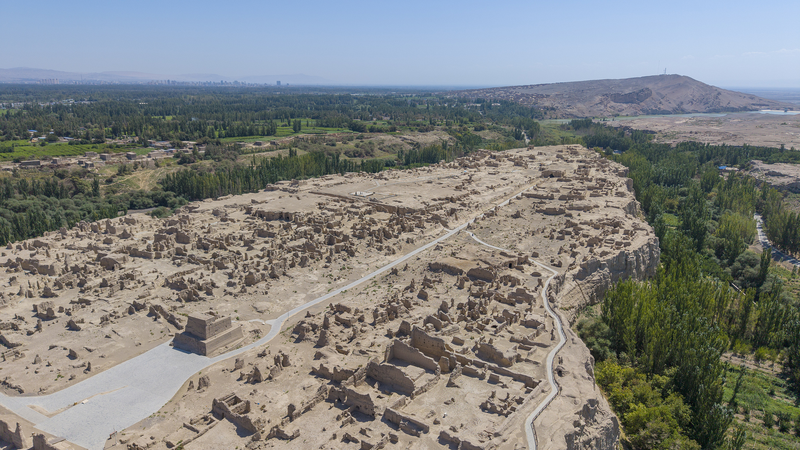Nestled in the arid oasis north of the Turpan basin, the Jiaohe Ruins stand as a silent testament to centuries of cross-cultural exchange along the Silk Road. Carved from the earth itself, this clay-built city once bustled with merchants, pilgrims and envoys traversing the ancient world.
Recognized as the best-preserved, longest-lasting and largest earthen city in history, Jiaohe offers a time capsule of urban life from the 1st century BCE to the 14th century CE. Its terraced layout, carved dwellings and intricate street grid reveal how ancient engineers harnessed natural resources to build a thriving desert metropolis.
Since its designation in 1961 as a national key cultural relic protection unit, China has invested millions in reinforcement and preservation. The site’s 2014 inscription as part of the Silk Roads: the Routes Network of Chang'an-Tianshan Corridor on UNESCO’s World Heritage List brought renewed global attention, sparking a surge of visitors eager to walk in the footsteps of history.
Today, Jiaohe Ruins blend cultural heritage with sustainable tourism. Local guides offer immersive experiences—from dawn photo safaris that capture the golden glow on clay walls to Uygur music performances under the open sky. These initiatives support the regional economy while preserving authenticity.
Whether you’re a young explorer chasing epic travel photos or a history buff craving real-world context, Jiaohe invites you to discover its soft ochre hues and whispered stories. Plan your visit in spring or autumn for mild temperatures, and partner with eco-conscious tour operators to minimize your footprint in this timeless desert city.
Reference(s):
Xinjiang color palette: Unveiling the timeless charm of Jiaohe Ruins
cgtn.com
